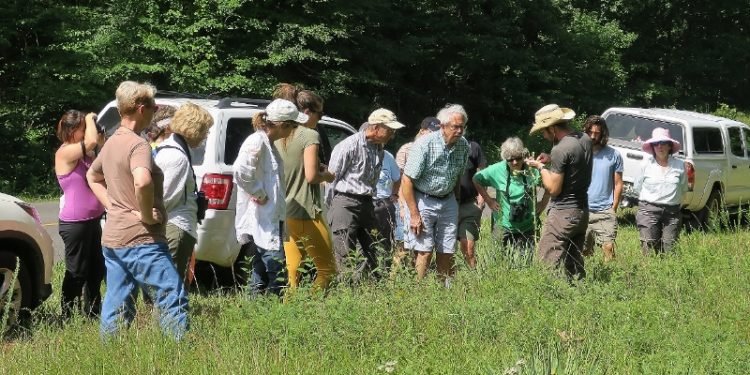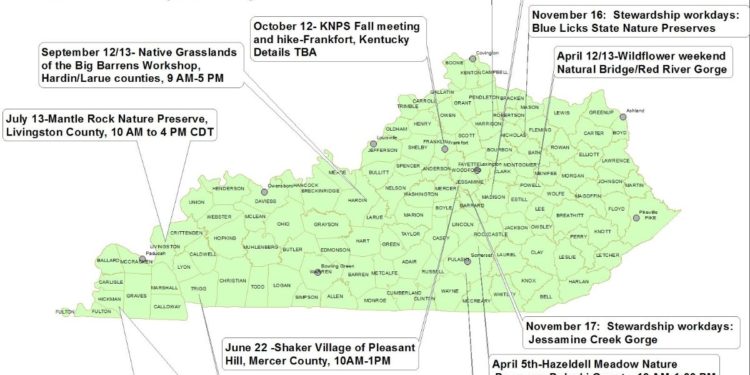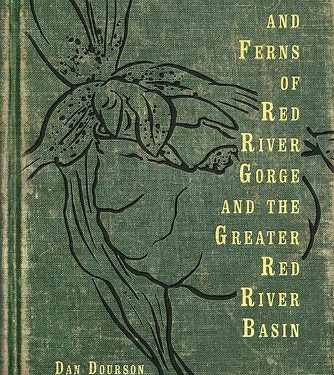All KNPS activities are open to everyone. All activities,
except Wildflower Weekend, require advance registration on our website and they
fill up quickly. Members of KNPS will be given the opportunity to register for
these activities before they are opened to the general public. If you are not a
member, you can join at https://sandbox.knps.org/membership/.
April 5th- Hazeldell Meadow Nature Preserve, Pulaski County, 10 AM to 1 PM EST
Join Dr. Krupa at Hazeldell Meadow Nature Preserve and hear all about his latest studies of Kentucky’s rarest carnivorous plant, the dwarf sundew (Drosera brevifolia). He has been studying this plant and it’s fascinating habitat for over 13 years! We will also learn about other associated species, such as spiders and other interesting plants. Tara Littlefield (botanist at the office of Kentucky Nature Preserves) will be there to answer any rarity, natural community or floristic questions, as well as John Burnett (Pulaski County Conservation District Land Manager). In addition, you will learn how to help in ongoing efforts to protect rare species and communities at Hazeldell through assisting with monitoring, management and restoration projects at Hazeldell Meadow Nature Preserve. Registration is now open. 10 person limit.
April 12 & 13- KNPS Annual Wildflower Weekend
Hikes will be offered on Friday and Saturday at Natural Bridge State Park and the Red River Gorge during Wildflower Weekend. See more details below.
May 11th- Griffith Woods WMA, Harrison County, 9 AM to 12 PM EST
Join Dr. Julian Campbell at Griffith Woods and hear all about this iconic bluegrass woodland with old growth oaks and hickories, cane thickets, and remnant mesic herbaceous flowers, such as bear grass and running buffalo clover. Julian has been studying bluegrass woodland vegetation for over 40 years and is the authority on past and present plants and communities in the region. Go to http://bluegrasswoodland.com/Griffith_Woods.html for information on Griffith Woods compiled by Julian. Plus, you will learn how you can help in ongoing efforts to protect rare species and communities at Griffith Wood WMA through assisting with monitoring, management, and restoration projects. If you would like stay late from 1pm-4 pm, you can help to work on invasive species removal. We will meet at 9 am in the main parking lot on east side of US 62 about 1500 feet north of the T junction with Russell Cave Road (Route 353). 15 person limit.
May 21 & 22- Sedge Workshop
Dr. Rob Naczi will lead a workshop at Eastern Kentucky University and nearby natural areas- FULL.
June 7th- Pine Barrens of the Cumberland Plateau, Pulaski County, 10 AM to 2 PM EST
Join Jim Scheff (Director of Heartwood), Tara Littlefield (botanist at the office of Kentucky Nature Preserves) and David Taylor (forest botanist at the Daniel Boone National Forest) as we explore the Keno and Curt Pond Ridge Conservation Site, a botanical hotspot of prairie and pine oak barrens, seeps and upland ponds just south of Somerset. Wood Lily should be in full bloom along with several other interesting plants. Plus, you will learn about ongoing efforts to protect rare species and communities at this site and how you can help by assisting with monitoring, management and restoration projects. Hike will be approximately 2 miles, moderate, mostly roadside. 10 person limit.
June 22nd- Prairies and Forests of Shaker Village of Pleasant Hill, 10 AM to 1 PM EST
Join Laura Baird, assistant preserve manager and naturalist, on a hike to view the prairie restoration, as well as the adjacent forests at Shakertown. You will learn many prairie flowers, trees and shrubs, woodland flowers, and even some pollinators! Hike will be 2-3 miles, moderate. 10 person limit.
July 6- Land between the Lakes- Botanical Hotspot Tour, 10 AM to 2 PM CDT
Join Devin Rodgers, botanist at Kentucky Nature Preserves, as we stop at several botanically important sites at LBL from prairies to wetlands. Devin has worked extensively at LBL conducting floristic surveys, rare species surveys and habitat characterizations. Elizabeth Raikes (LBL staff biologist), Tara Littlefield (botanist at Kentucky Nature Preserves), Jim Scheff (Heartwood Director), and representatives from Austin Peay University and Southeastern Grassland Initiative will also be there to assist in logistics and identifications. In addition, you will learn about ongoing efforts to protect rare species and communities at botanical sites at LBL and how you can help by assisting with monitoring, management, and restoration projects. A new way to document and assist in monitoring rare plants is iNaturalist. We will hike approximately 2 miles total between a few sites, moderate. 10 person limit.
July 13- Mantle Rock Nature Preserve, Livingston County, 10 AM to 4 PM CDT
Join Chris Benda (Illinois botanizer), Jeff Nelson (KNPS Board Member), Tara Littlefield (botanist at Kentucky Nature Preserves/Kentucky Botanist), and Shelly Morris (Western Kentucky TNC Project Director) as we conduct a floristic inventory at Mantle Rock of sandstone glades, barrens, woodlands and mesic forests at this floristically fascinating site. Bring a GPS, hand lens, and field notebook and help with the floristic inventory. A new way to document and assist in monitoring plants is iNaturalist. We will hike 3-4 miles, difficult, off trail. 10 person limit.
October 12- KNPS Fall meeting and hike, Frankfort, Kentucky. Details TBA.





